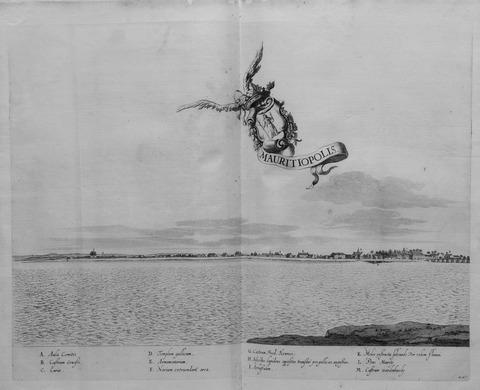当前位置:
X-MOL 学术
›
Trans. Instit. Br. Geogr.
›
论文详情
Our official English website, www.x-mol.net, welcomes your
feedback! (Note: you will need to create a separate account there.)
Landscape semaphore: Seeing mud and mangroves in the Brazilian Northeast
Transactions of the Institute of British Geographers ( IF 3.3 ) Pub Date : 2021-03-22 , DOI: 10.1111/tran.12449 Archie Davies 1
Transactions of the Institute of British Geographers ( IF 3.3 ) Pub Date : 2021-03-22 , DOI: 10.1111/tran.12449 Archie Davies 1
Affiliation

|
This paper explores how the amphibious landscapes of mangroves and mudflats of Northeast Brazil have been seen and re-seen. The spatial and political ecologies of mangroves and mud interact with political aesthetics in specific ways. Reading landscapes as aesthetic encounters] with nature means recognising that ways of seeing are as historically and geographically specific as what they represent and produce. Thinking through the history of landscape from the Northeast exposes the coloniality of landscape thought but can also show how landscape has been reinvented and reconceptualised. Using Marilena Chauí’s concept of semaphore, we can place landscape's symbolic force within the colonial encounter. This opens up not only the intellectual history of how geographers use landscape, but the relationship between aesthetics and nature, and between perception and territory, in a specific place. Putting these creative and intellectual practices together can draw out the rich specificity of responses to a singular, changing landscape, and multiply geographical ways of interpreting, representing, and conceptualising landscape. Seeing amphibiously allows us to revel in landscape’s flexibility and stickiness. In this paper I pursue this argument through an analysis of cultural representations of the coastal landscape of the Brazilian Northeast. The Northeast’s place within the emergence of European landscape histories reminds us of the under-emphasised coloniality of landscape. More importantly, in 20th-century representations of the territory of the estuarine Atlantic coast we find a re-calibration of perspective that is foreshortened, embodied, and muddied. They unsettle the fixities of colonial ways of seeing space, nature, and territory and amount to a regionally specific, counter-hegemonic political aesthetics of nature.
中文翻译:

景观信号量:看巴西东北部的泥土和红树林
本文探讨了人们如何看到和重新看到巴西东北部红树林和泥滩的两栖景观。红树林和泥土的空间和政治生态以特定的方式与政治美学相互作用。将风景解读为与自然的美学相遇]意味着认识到观看方式与其所代表和生产的事物一样具有历史和地理特征。对东北景观历史的思考揭示了景观思想的殖民性,但也可以展示景观是如何被改造和重新概念化的。使用 Marilena Chauí 的信号量概念,我们可以将景观的象征力量置于殖民遭遇中。这不仅开启了地理学家如何使用景观的思想史,而且开启了美学与自然之间的关系,在特定的地方,在感知和领土之间。将这些创造性和智力实践放在一起可以引出对单一的、不断变化的景观的丰富的特异性反应,以及解释、表现和概念化景观的多种地理方式。两栖观察让我们陶醉于景观的灵活性和粘性。在本文中,我通过分析巴西东北部沿海景观的文化表征来探讨这一论点。东北部在欧洲景观史的出现中的地位让我们想起了被低估的景观殖民性。更重要的是,在 20 世纪对大西洋河口沿岸领土的描绘中,我们发现重新校准的视角被缩短、体现和模糊。
更新日期:2021-03-22
中文翻译:

景观信号量:看巴西东北部的泥土和红树林
本文探讨了人们如何看到和重新看到巴西东北部红树林和泥滩的两栖景观。红树林和泥土的空间和政治生态以特定的方式与政治美学相互作用。将风景解读为与自然的美学相遇]意味着认识到观看方式与其所代表和生产的事物一样具有历史和地理特征。对东北景观历史的思考揭示了景观思想的殖民性,但也可以展示景观是如何被改造和重新概念化的。使用 Marilena Chauí 的信号量概念,我们可以将景观的象征力量置于殖民遭遇中。这不仅开启了地理学家如何使用景观的思想史,而且开启了美学与自然之间的关系,在特定的地方,在感知和领土之间。将这些创造性和智力实践放在一起可以引出对单一的、不断变化的景观的丰富的特异性反应,以及解释、表现和概念化景观的多种地理方式。两栖观察让我们陶醉于景观的灵活性和粘性。在本文中,我通过分析巴西东北部沿海景观的文化表征来探讨这一论点。东北部在欧洲景观史的出现中的地位让我们想起了被低估的景观殖民性。更重要的是,在 20 世纪对大西洋河口沿岸领土的描绘中,我们发现重新校准的视角被缩短、体现和模糊。











































 京公网安备 11010802027423号
京公网安备 11010802027423号